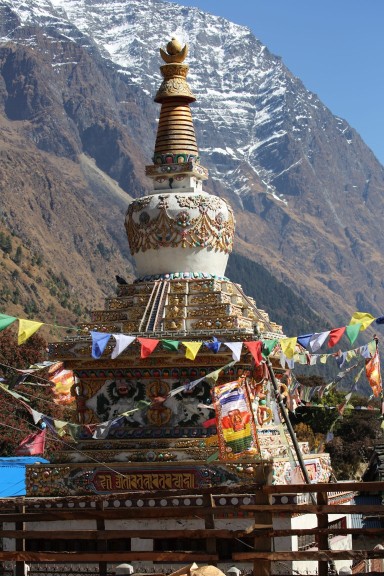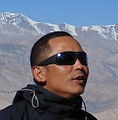

About Visas, Permits, Arriving, etc.
Do we need a visa?
Foreign nationals (except Indian nationals) need a visa, which you can get at the airport when you arrive. You can get your visa in advance, but it’s easy to get it at the airport. If it is particularly busy, you may need to wait in line for up to about an hour, but it is usually quicker. If you arrive by land, you can get your visa at the border.
You must have a passport-size photo with light background. Credit cards are not accepted as of August 2016, so you should plan to use cash. For current fees and visa requirements see Discover Nepal, the official tourism web site.
What happens when we arrive at the airport?
If you fly into Kathmandu (the only international airport), you will fill out a form for your visa, then wait in line to process and pay for your visa. Then you will pick up your bags and exit the airport.
Will you meet us at the airport?
Yes, I will meet you at the airport once you exit from the immigration process with your bags. We will have a sign with your name on it, and you will know my picture from this web site.
Do we need any permits?
Yes, you will need a trekking permit. Some treks, require special additional permits. Climbing many of the peaks, even some non-technical climbs, require a special permit. I can get your permits in advance. You can find information on permits on Discover Nepal, the official tourism web site, under Plan Your Trip.
Are there checkpoints along the treks?
Yes – you must have your permits in place at checkpoints. The process is routine, but I generally handle checkpoints for my clients.
Are vaccinations required?
Nepal does not require vaccinations for entry, but some are recommended depending on your destinations. I cannot advise you on what vaccinations to get for your trip.
Do we need travel insurance?
This is a personal choice. Many trekkers get medevac insurance, in case of an emergency that requires a helicopter or other medevac. Check with your current medical insurance to see what they will cover. An emergency medevac can be quite expensive if not covered by insurance. If you decide to get medevac insurance, make sure that it covers up to the altitude of your trekking.
How do we handle money?
Most travelers use a combination of cash and credit/debit cards. Travelers checks are accepted by some establishments, but less than before and not by tea huts (lodges) along the trek. ATMs are available in Kathmandu and other larger towns, but they are sometimes out of service and the daily limits may be lower than many visitors are used to (for example, about US$100), so you need to plan ahead. There are many money changing establishments in Kathmandu, which can easily exchange US$50 and $100 bills. Some establishments may only be able to exchange lower denomination bills, so you might want to bring a variety.
Most credit cards charge an international exchange commission, so you might want to check on that. VISA and MasterCard are generally accepted, and AmEx in some larger establishments. Some debit cards to not have international premiums. Some tea huts will exchange cash for rupees, but it is best to acquire your rupees before starting the trek.
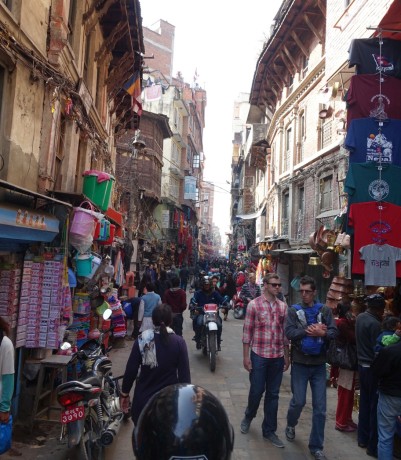
About Trekking in General
What different types of treks can we take?
See the Services page.
When is the best season for trekking?
Trekking is done year round, and the best trekking time can vary by region. In general, the best trekking weather, and the most popular season, comes in late September through November. Another popular season is March to May. December to February is the cold season, and June to August is the rainy season, though many people trek during these times as well.
What are accommodations like during a trek?
Most “teahouse” lodges have private sleeping rooms with 1 to 3 beds. The rooms are usually basic with beds, perhaps a table, and at least one window. The beds have mattresses and bedding, though many trekkers choose to use their sleeping bags. Some lodges have dormatories, particularly where there are fewer lodges at higher elevations or in more remote areas. Bathrooms are usually shared.
Are there showers?
Many lodges have showers, though most are not heated. Hot water sometimes has an extra cost. Showers are less common at higher elevation and more remote areas. It’s good to carry a washcloth for cleaning up when no shower is available.
How far will we hike each day?
This will depend on you and the section of the trek, but we usually plan on about 4 to 6 hours per day. The distance will vary depending on the elevation gain.
How is the food?
The lodges provide a variety of options, including both Nepali and “western” style dishes. The menus are often similar from lodge to lodge. Meals include noodles, potatoes, and rice dishes, with various vegetables or lentils (dal), and soups or stews. Options with meat, tuna fish, or eggs are generally available. Momos (dumplings) are a popular meal or appetizer at many lodges. There is plenty of good food to satisfy your hearty appetites!
What if I’m a vegetarian?
Vegetarians have no difficulty finding vegetarian options at the lodges. Many Nepalis are Buddhist and generally do not eat meat.
How do we get drinking water?
Most trekkers rely on water purification tablets/drops, or UV water purifier wands, for their individual water bottles. Free, clean (but unpurified) water is readily available along the trails. Water is available for sale at some lodges. Many trekkers also drink tea or “hot lemon”, which has been boiled, from tea huts along the trail and with meals.
Can we get beer, wine, or liquor on the trail?
Most lodges have beer, and many have limited liquor options. You are unlikely to find wine outside the cities or larger towns.
Is it difficult to hike at high altitude?
People tire more quickly at high altitude since there is less oxygen in the air. The higher the altitude, the less oxygen in the air. You should be in good physical shape, especially with aerobic exercise, before hiking at high altitude.
What can we do about altitude sickness?
Treks are planned so that you don’t gain altitude too quickly, so you acclimatize as you go and avoid altitude sickness. Care should be taken to acclimatize for higher-elevation treks, especially when crossing a high pass. Being physically fit may help but does not always prevent altitude sickness. If you experience altitude sickness, the remedy is to return to lower elevation to acclimatize before proceeding. If you fly into a higher elevation, you should plan for time to acclimatize. The drug Diamox can reduce the symptoms of altitude sickness.
You can learn more about altitude sickness at altitude.org, or from the free Medex book, "Travel at High Altitude" (available in multiple languages), or many other sources.
Is theft a problem while trekking?
Theft is almost never a problem along trekking routes or in the lodges. As far as I know, my clients have never had anything stolen from them. However, I recommend being careful with your belongings. For peace of mind, your lodge rooms can be locked.
Can I use my cell phone?
Cell phone coverage is available along some sections of many trekking routes. You can get a SIM card in Kathmandu for your phone, to use the local networks (you will need an unlocked phone or device).
Is WiFi available on the trek?
Some lodges have WiFi available, often limited to several hours as it is often solar powered. There is usually an extra fee for using the wifi.
Is there electricity? Can I charge devices during the trek?
Many lodges have electricity for at least some hours in the evening (many are solar powered). Sometimes there is an additional fee to charge a device. Some lodges offer USB ports for charging. Nepal uses 220-240 volts, and the plugs have 2 or 3 round prongs. You can buy plug adapters in Kathmandu. Universal adapters are available in many countries.
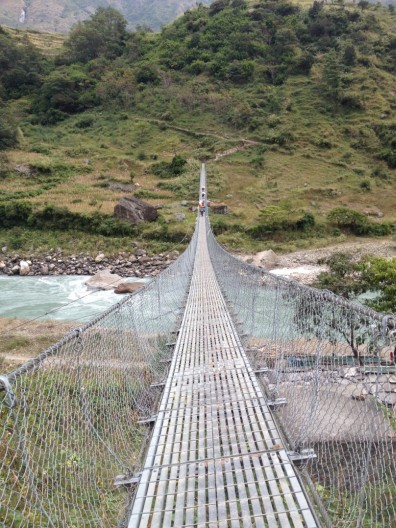
About Trekking Equipment
What equipment should we bring?
Your equipment will depend on the type of trek, how high (and cold) you will go, how much you want to carry, and other things. Clothing needs may vary from sub-tropical valleys (t-shirts) to mountain snow and ice conditions.
We do not provide a full equipment list, which you can find elsewhere. But here are some particular items that you might want to consider for your equipment list:
Can we rent or buy equipment in Nepal?
Yes, there are many trekking outfitters and equipment shops in Kathmandu and Pokhara, and I can recommend specific shops. You can get almost any equipment you need here, as well as maps of the trekking routes. Many expeditions and other trekkers have left their equipment behind, which is available for rent. Many trekkers rent expedition sleeping bags, coats, or other equipment here rather than bringing them from home. New equipment is often cheaper in Nepal than in your home country.
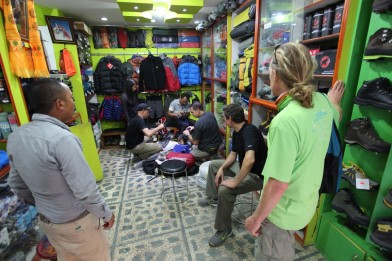
About My Trekking Guide Services
What languages do you speak?
I speak English, Nepali, Sherpa, Thangmi, and Tamang.
How well do you speak English?
I am self-taught in English. I can communicate easily in English and have no difficulty understanding my clients, though we sometimes need to clarify what we mean to avoid confusion. I work with many clients who speak English as a second language (from Germany, France, Italy, etc.). If we start a conversation by email or phone you will quickly know my English level. One of my former trekking clients helped me with the English for this web site.
Do you take individuals?
Yes, I often serve as Guide to individual trekkers. However, some regions require that you have at least 2 people in your group.
How large a group can you take?
For teahouse treks (described on the Services page) I recommend having up to about 8 people. Larger camping-style treks can include up to about 20 trekkers. I can hire additional trekking staff as needed for your group.
Can we make changes to the trek along the way?
Yes, I can work with you to make changes that either fit within or expand your current schedule.
How would you handle an emergency on a trek (serious illness or injury)?
Several steps that can be taken in case of emergency, depending on the case:
How do I book a trek with you?
See the Services page for more on the services I offer and how to arrange them.
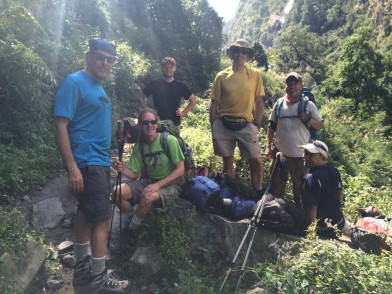
About Cultural Sensitivity
Are there any customs we should be aware of?
Nepalis in trekking areas are quite familiar with the “unusual” ways of visitors from other lands, and we are tolerant of visitors sometimes doing odd things. But we do have some customs that you may want to be sensitive to:
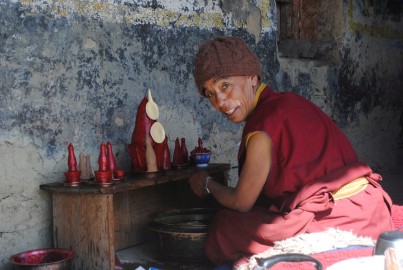
About Nepal
Here are a few websites where you can learn more about Nepal:
Discover Nepal - official site of the National Tourism Board
Nepal Travel Guide - on Wiki Travel, in multiple languages
Lonely Planet Guides for Nepal - includes general information on Nepal
